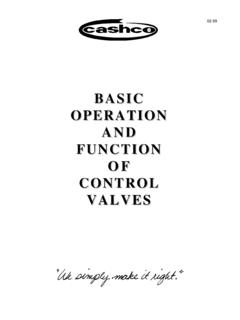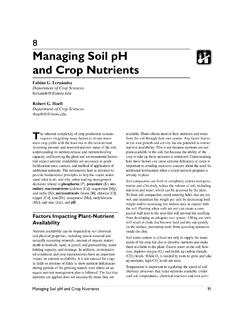Transcription of CARE & FEEDING GUIDE - Martin Guitar
1 CARE & FEEDING GUIDE FOR YOUR Martin OF CONTENTSP roper Care of Your Instrument ..2 Humidity, Temperature and Storage ..2 Cleaning the Finish ..4 Tuning Machine Maintenance ..4 Inserting Bridge Pins and Endpins ..5 Strings ..6 Adjusting the Action ..7 Necks and Tops ..7 Instrument Care While Traveling ..8 Using Guitar Straps ..10 How to String a Steel-String Guitar ..11 Identifying the Parts of Your Guitar ..121 PROPER CARE OF YOUR INSTRUMENT HUMIDITY, TEMPERATURE AND STORAGEYour instrument is made of thin wood which is easily affected by temperature and humidity. C. F. Martin recommends that you keep your instrument s humidity level between 45-55% and temperature between 72-77 degrees Fahrenheit. A rapid change in temperature or exposure to cold can cause small cracks in the finish.
2 We recommend the use of a hygrometer/thermometer to measure the relative humidity and temperature surrounding your humidity increases, moisture content of wood goes up rapidly, causing it to expand and swell. A gradual increase in humidity won t generally do permanent damage to your instrument. When very high humidity is combined with high temperature, glue joints could possibly become weakened and may even open slightly. If your instrument is exposed to high temperature or humidity for any length of time, the glue under the bridge could weaken causing the bridge to pull changes in humidity are what you want to guard against. If, for instance, you place your instrument near a source of dry heat, the humidity around it will drop much faster than it would naturally, although a sudden dry spell can have the same effect.
3 If the moisture content of wood is forced down quickly, portions of it shrink faster than others, causing cracks and open joints. Don t set your instrument next to a source of heat or hang it on a wall where it will dry out. all costs, avoid hanging your instrument on an exterior wall during winter months. The wall will be cooler than the inside air. The result is a conflict between the temperature of the top and back, with potential damage as a result. Should the instrument be exposed to freezing temperatures, let it warm to room temperature while still in its case. This allows the instrument to acclimate to room temperature more slowly, decreasing the possibility of wood and finish should be taken if you choose to use a humidifier to combat low humidity. Moisture in direct contact with the instrument could cause damage, as can the rubber or vinyl parts of a recommend storing your instrument in its case when not in use.
4 Humidity is easier to control in a smaller space. If your instrument will not be played for an extended period of time, C. F. Martin recommends detuning your instrument for case supports the neck and body of your instrument as evenly as possible. It s important that you don t let anything lie under the head (the tuning machine end), as this could damage the neck and body. Any repairs to your instrument should be performed by an authorized repair person. To obtain service for instruments purchased in the United States or Canada, please see for a list of Authorized Service Centers. For instruments purchased in other countries, please contact your local C. F. Martin dealer or THE FINISHThe best way to clean your instrument is with a warm, damp cloth. This will remove harmful chemicals.
5 Your instrument is coated in the highest grade finish available and is sensitive. Any type of solvent, especially those found in plastic, vinyl and leather straps, will mar the finish, as will alcohol, citric acid, aftershave lotion, insect repellent and a number of related substances. Perspiration can also damage your instrument, so keep it dry. To polish full gloss instruments, use Martin polish and a clean C. F. Martin polishing cloth. Do not use polish on a satin finished instrument. It will cause the instrument to have an uneven sheen. We recommend wiping down your instrument and strings with a soft, dry cloth before storing to remove harmful skin oils. Products containing silicone should not be MACHINE MAINTENANCET uning machines normally need very little care other than periodic lubrication.
6 Enclosed machines, the type with a cover over the gears, are lubricated by the manufacturer, but the open type should be lubricated once or twice a year. Just put a little household petroleum jelly on the end of a toothpick and place the jelly in the gears. Be careful not to use too much because it catches dust which can wear out the types of machines are adjustable for ease of tuning. The open type can be made harder to turn by tightening the screw in the middle of the gear. Check this screw every time you replace the strings because it can work loose. Most enclosed machines have a screw in the end of the tuning knob that will make the machines harder to turn when the screw is tightened. Not much tension is needed, so don t overtighten the adjusting THE BRIDGE AND ENDPINSThe strings are held in place at the bridge by a small notch at the front of each bridge pin, with the exception of Authentic model bridge pins that will not have a notch.
7 It is important that the bridge pin slot be facing straight forward so the string is properly aligned on the bridge saddle. Make sure that the ball end of the string is pulled up tightly against the inside of the top before inserting the bridge often bridge pins are hammered in so hard that they become wedged and split the bridge. After inserting the string and pin, a solid push with your thumb is all that is needed. Bridge and endpins are tapered and held into place by friction. They are not glued in and are not designed to seat up to the collar. For proper insertion, hold endpin between thumb and forefinger, twist slightly while carefully pushing the endpin into the bottom end of the instrument. Do not use force. Do not hammer or tap endpin with any object; doing so may cause the wood to crack.
8 The endpin should be checked frequently to make sure it has not worked styles of playing demand different types of strings and C. F. Martin offers a variety of styles for every player. Your instrument was shipped with the strings that we believe will give the best results for most players but we welcome you to explore our full line of strings by visiting : Never use steel strings on a classical instrument. A classical instrument has much lighter bracing than most steelstring acoustic instruments and using steel strings on a classical instrument canliterally pull it apart. Whatever strings you choose, keep in mind that they won t last forever. As you play your instrument, and the strings are exposed to various environmental elements, you will notice the sound will gradually lose brilliance.
9 At this point, you may want to replace the strings. We recommend replacing the entire set, as replacing only one string causes an unbalanced F. Martin 6-string instruments are made for strings no heavier than medium gauge (. ), and 12-string instruments should use lighter gauge sets. C. F. Martin will not accept responsibility for use of strings which are heavier than THE ACTIONAn instrument s action or playability is defined from the string height between the top of the fret and bottom of the string. Your instrument s action will change over time from being under constant string tension or change in the environment and will require adjustments. The action can be adjusted by the truss-rod, saddle height, or nut. C. F. Martin recommends taking your instrument to an Authorized Service Center for action adjustments.
10 C. F. Martin cannot accept responsibility for damage caused by unauthorized & TOPSNeck bow is often misunderstood. With the adjustable truss rod, the neck can be adjusted for relative straightness and proper relief. This is not considered to be a consumer adjustment and should be made by an Authorized Service sighting down the neck gives the illusion of neck bow when it is actually within specifications. This is because the top will rise and fall with changes in temperature and humidity. This swelling raises the end of the fingerboard, which is actually attached to the top rather than the neck. If this should become too high, it might need adjustment or repair. The bellying of the top is normal and should be expected. The top is actually made with an arch. This will increase over a period of time due to string stress and/or high humidity.






